Overview
The article focuses on mastering AI rendering techniques in architecture and design, emphasizing its transformative potential for creating realistic visualizations and enhancing workflow efficiency. It supports this by detailing various applications, technological components, and strategies for effective use, highlighting that AI rendering not only streamlines the design process but also enables better client engagement and sustainable practices in architectural projects.
Introduction
In the rapidly evolving world of architecture, AI rendering emerges as a groundbreaking tool that is reshaping how designs are visualized and presented. By utilizing advanced artificial intelligence algorithms, architects can create stunningly realistic images and animations that not only capture the essence of their concepts but also engage clients on a deeper level. This innovative approach streamlines traditional rendering processes, enhancing efficiency and output quality while allowing for real-time feedback and design optimization.
As the industry embraces this technology, understanding the foundational aspects of AI rendering becomes essential for architects and designers looking to stay ahead of the curve. With significant investments in AI and a growing demand for skilled professionals, the future of architectural visualization is not just bright—it’s transformative.
Understanding AI Rendering: The Basics
AI rendering represents a transformative approach in architectural representation, utilizing sophisticated artificial intelligence algorithms to generate realistic images and animations of design concepts, including lifelike CG humans that effectively bridge the uncanny valley. This modern technique distinguishes itself from traditional methods, which often involve extensive manual adjustments and high computational demands. By harnessing machine learning, AI production significantly enhances both efficiency and output quality.
Central to this technology are neural networks, which simulate the brain’s processing capabilities to produce intricate images, and generative adversarial networks (GANs), known for their ability to create high-fidelity visuals. Furthermore, the role of pre-sales visualization becomes apparent as it empowers developers by providing a tangible asset that can ignite interest and investment long before the physical realization of the endeavor. As highlighted in our case studies, pre-sales presentations not only build confidence in potential investors but also serve as a crucial tool for generating revenue, with statistics showing that projects with high-quality visualizations can secure funding up to 30% faster.
The U.S. government’s substantial investment of $3.28 billion in AI in 2022 underscores the financial commitment to advancing AI technologies, reinforcing its growing importance in architecture. With the highest concentration of design professional jobs found in the District of Columbia, as noted by the U.S. Bureau of Labor Statistics, the demand for skilled designers proficient in AI is evident. As AI rendering becomes increasingly integral to the architectural process, understanding these foundational concepts is essential for designers and planners.
Furthermore, the case analysis on sustainability in architecture emphasizes a practical use of AI visualization, demonstrating how 72% of professionals prioritize sustainable technology to fulfill client needs. With more than two-thirds of professionals either utilizing or planning to adopt AI, it is clear that this technology is not just a trend, but a standard tool reshaping the industry landscape.
Practical Applications of AI Rendering in Architecture
AI rendering provides a wide variety of applications in architecture that significantly enhance both creative processes and client interactions. Among the most impactful applications are:
Concept Visualization: AI allows designers to swiftly convert sketches into high-quality visuals, facilitating more effective client presentations.
This capability is pivotal as it allows for deeper engagement and understanding of concepts, similar to the quick visualization of ideas offered by AI rendering.Real-time Design Feedback: By leveraging AI tools, designers can simulate lighting and material effects instantly, allowing for informed decision-making on the spot.
This immediate feedback loop enhances the creation process, as architects can iterate more swiftly, paralleling the iterative creation process supported by AI rendering.Design Enhancement: The incorporation of AI-generated insights enables the assessment and alteration of creations, enhancing both aesthetics and functionality.
With 65% of industry professionals believing that AI rendering can boost productivity, these insights are invaluable for enhancing project outcomes, similar to how effective communication and decision-making are fostered through detailed 3D models.Affordable Exploration: AI visualization tools can lower expenses linked to conventional visualization approaches, allowing architects to investigate different creative alternatives without substantial monetary obligation.
This aligns with the cost-effectiveness of AI rendering for initial visuals, enabling early-stage exploration without extensive resource investment.Virtual Reality Integration: AI facilitates the creation of immersive environments, offering clients a chance to experience designs before construction begins.
This not only aids in visualization but also fosters higher client satisfaction rates with visuals created through AI rendering, much like the collaborative creation process at J. Scott Smith Visual Designs, which emphasizes smooth communication and client satisfaction.
These applications underscore the importance of AI rendering as a crucial asset in contemporary architectural practice, streamlining workflows and elevating the creative process, while reinforcing the necessity of investing in quality visual representations to effectively capture architectural vision.
The Technology Behind AI Rendering: How It Works
AI generation relies on several key technological components that enhance its effectiveness while ensuring precision and detail:
Machine Learning Algorithms: These sophisticated algorithms, which can be categorized into supervised and unsupervised learning, are trained on extensive datasets. They permit classification and regression tasks, allowing the algorithms to learn and enhance performance capabilities. By analyzing vast collections of images, these algorithms refine their ability to achieve ai rendering of realistic visual outputs, essential for capturing the essence of architectural designs and telling a compelling story about the structure’s future.
Neural Networks: As a subset of machine learning, neural networks are specifically designed to process image data. They excel at producing realistic textures and lighting effects, making them essential for high-quality architectural visualizations. Recent advancements in neural networks have demonstrated their ability to generate photorealistic images through ai rendering, which is vital in effectively visualizing residential architecture and enhancing community engagement, particularly for projects like those at Kirtland Community College. The complex elements generated by these networks play a crucial role in the story that each layout communicates.
GPU Acceleration: The use of graphics processing units greatly enhances processing speeds, facilitating the generation of real-time visualizations. This acceleration is essential for designers who need rapid feedback on their design iterations, with statistics indicating that GPU-accelerated visualization can decrease processing times by as much as 70% in comparison to conventional methods. Such efficiency enables designers to communicate more effectively with clients and stakeholders, facilitating collaboration that enhances the storytelling aspect of their creations.
Cloud Computing: Many modern AI visualization tools utilize cloud computing, providing designers access to powerful computational resources without the burden of costly local hardware. This accessibility enables more flexible workflows and scalable solutions, facilitating collaboration and precision in processes. The capability to share intricate visuals in real-time through ai rendering enriches the narrative delivered to clients and the community, ensuring that the project’s story is effectively conveyed.
By comprehending these elements and their interrelations, professionals can make informed choices about the most appropriate tools and methods for their particular visualization needs. For instance, a case study on the role of probability in machine learning demonstrates how AI visualization technologies can effectively handle uncertainty in prediction processes, ultimately improving their creative workflows and ensuring precision through meticulous detail and client collaboration, which together create a compelling narrative about the architectural vision.
Benefits and Challenges of AI Rendering Tools
AI rendering tools provide a transformative opportunity for designers, offering several key advantages that can greatly improve their workflows and enhance overall business efficiency. By contemplating the outsourcing of 3D architectural visualization, professionals can free up resources and concentrate on essential tasks, similar to successful companies that have adopted outsourcing across various services. This strategic shift allows for improved operational efficiency, enabling architects to concentrate on innovative design rather than getting bogged down by technical execution.
Increased efficiency can be achieved by leveraging AI rendering, drastically reducing visualization times and enabling architects to devote more time to creative processes. Notably, studies show that employees in various industries, such as those at Dentsu, save between 15 to 30 minutes daily thanks to AI assistance. As Robert Kugel, Executive Director of Business Research at Ventana Research, states, ‘Simple applications [of AI] are likely to produce an underappreciated boost to productivity.’ This time-saving aspect is essential in the fast-paced architectural environment.
- Enhanced Realism: AI rendering’s capability to produce highly realistic imagery elevates the quality of client presentations and proposals. The integration of advanced visualization methods boosts property value through aesthetic charm, thereby distinguishing developments in a competitive market. Feifei Liu emphasizes this point by highlighting how technology can make cutting-edge innovations more approachable, fostering better understanding and engagement from clients.
- Cost-Effectiveness: Many AI rendering tools are cloud-based, significantly lowering the need for extensive hardware investments. This shift not only lowers initial expenses but also facilitates easier scalability as requirements evolve, making it a financially wise decision.
Despite these evident benefits, several challenges come with the incorporation of AI visualization tools:
- Learning Curve: Adopting AI methods necessitates time and training for teams used to conventional visualization techniques. Architects must invest in upskilling to effectively harness the full potential of AI rendering tools.
- Quality Control: Although AI can generate impressive visuals, human oversight remains essential to ensure that the outputs meet artistic intent and quality standards. Architectural design is nuanced, and the subtleties of human creativity must guide AI-generated content. Moreover, the recent case study titled ‘The Power of Pre-Sales Visualization’ illustrates that effective AI rendering serves as a bridge between concept and reality, empowering developers by providing a tangible asset that can ignite interest and investment long before the physical realization of the endeavor. This process not only generates crucial revenue for construction but also boosts confidence in the undertaking. The recent White House Executive Order issued in October 2023 establishes new standards for AI safety and security, which designers must consider as they adopt these technologies. By carefully weighing these benefits against the challenges—and keeping in mind the regulatory landscape—architects can strategically navigate the integration of AI visualization into their practices, ultimately leading to enhanced productivity, market differentiation, and project confidence. Additionally, architects should consider the specific FAQs regarding outsourcing 3D architectural visualization, which can provide valuable insights into the decision-making process and its impact on business efficiency.
The Future of AI Rendering: Trends and Innovations
The future of AI rendering in architecture is set to undergo significant transformation, characterized by several key advancements:
Increased Integration with BIM: AI rendering tools are expected to achieve deeper integration with Building Information Modeling (BIM) systems. This synergy will enhance collaboration and streamline workflows from the initial design phase through to construction, ensuring that all stakeholders have access to real-time data and insights. Companies such as Amazon Web Services (AWS) and IBM are already at the forefront of implementing NLP technologies to enhance user experiences, which could align with progress in AI visualization with BIM, akin to the collaborative visualization process utilized by J. Scott Smith Visual Designs.
Advancements in AI Rendering: Ongoing improvements in GPU technology are paving the way for more interactive and dynamic visual experiences. These advancements will allow architects to visualize projects in real time, facilitating quicker decision-making and enhancing client presentations. Just as J. Scott Smith ensures client satisfaction through continuous feedback and progress in AI rendering, the global investment in AI is expected to reach US $200 billion by 2025, underscoring the importance of these technologies in the architectural sector.
Personalized Creation Solutions: With the evolution of AI, the capacity to deliver personalized recommendations will grow. AI algorithms will examine user preferences and behaviors, providing customized suggestions that align with individual client needs, ultimately leading to more satisfying results. This customization reflects the careful attention to detail observed in the design proposals crafted by J. Scott Smith Visual Designs.
Sustainability Analytics: Future iterations of AI rendering are likely to incorporate sustainability metrics, enabling architects to embed environmentally conscious design choices into their work. This emphasis on sustainability will not only meet client demands but also conform to global standards for responsible architecture, similar to how J. Scott Smith prioritizes collaboration and effective communication to ensure objectives are achieved.
Client Engagement and Feedback: The initial communication phase is crucial, as highlighted by the role of J. Scott Smith’s virtual assistant, which aids in answering basic inquiries and facilitating a smooth onboarding process. This engagement ensures that all project specifications are captured early on, setting the stage for successful collaboration.
As Dan Negrea, co-founder and CEO of HyperSense Software, notes, “The demand for AI skills is sharply increasing, and industries open to AI are enjoying high productivity growth and wage premiums.” He further emphasizes the significance of agile digital transformation in promoting growth for startups and established firms alike, making it clear that embracing AI innovations is essential for designers. Staying informed about these trends is essential for professionals aiming to adapt and thrive in this rapidly evolving landscape.
By adopting these innovations, designers can improve their practice and contribute to more efficient, sustainable design solutions, reflecting the ethos of J. Scott Smith Visual Designs in their dedication to high-quality visual representations.
Mastering AI Rendering Techniques: Tips for Success
To effectively master AI visualization techniques, architects can implement several strategic tips:
Start with Basic Tutorials: Engaging in beginner tutorials is crucial for building a solid foundation in AI design software. These resources assist users in grasping core functionalities and establish a foundation for more intricate endeavors.
Experiment with Different Tools: The market offers a variety of AI visualization tools, each catering to different workflows and design styles. Exploring these options allows professionals to identify the software that aligns best with their creative vision and project requirements.
Notably, V-Ray 7 has introduced advanced features for faster scene building and enhanced shading, showcasing ongoing innovations in this space.
Join Online Communities: Becoming active in online forums and communities can significantly enhance learning. Here, professionals share insights, resources, and constructive feedback, fostering a collaborative environment essential for growth and innovation.
Stay Updated on Industry Trends: Keeping abreast of industry news and attending webinars is vital for understanding the latest advancements in AI imaging technology. The architectural community exhibits a mix of excitement and caution towards using AI, indicating a readiness to blend new technology with established practices. Given the projected digital asset management market expansion from $3.96 billion in 2023 to $16.18 billion by 2032, staying informed enables architects to leverage new tools and techniques effectively.
Practice Regularly: Consistent practice is key to refining artistic skills and developing a discerning eye for detail. Consistently utilizing these techniques in actual endeavors can result in substantial enhancements over time. By following these strategies, architects and designers can elevate their proficiency in AI visualization, ultimately enhancing the quality and sustainability of their projects.
The focus on accuracy and detail in 3D exterior illustrations plays a crucial role in visualizing and enhancing residential architecture concepts. Small details, like textures and delicate lighting effects, play a crucial role in the narrative aspect of architectural visuals, enabling viewers to connect emotionally with the creations. Additionally, with advancements in AI creating lifelike CG humans, architects can effectively bridge the uncanny valley, adding depth and realism to their visualizations.
For example, integrating lifelike human figures in visualizations can improve the feeling of scale and context, making creations more relatable. Given the projected 70% urban population growth by 2050 and the emphasis on sustainable design by 80% of AEC professionals, integrating sustainable practices into AI rendering techniques is increasingly crucial, reinforcing the importance of these advancements in meeting future architectural demands.
Conclusion
AI rendering stands at the forefront of architectural innovation, poised to transform how designs are visualized and communicated. With its ability to produce breathtakingly realistic images and animations, this technology enhances the efficiency of design processes while facilitating real-time feedback and optimization. The integration of advanced algorithms, neural networks, and cloud computing not only streamlines workflows but also empowers architects to engage clients more effectively, making pre-sales visualization a valuable tool in generating interest and investment.
As the architectural landscape continues to evolve, the benefits of AI rendering—such as increased efficiency, enhanced realism, and cost-effectiveness—are becoming increasingly evident. However, it is crucial to acknowledge the challenges that come with adopting these technologies, including the need for proper training and quality control. By addressing these hurdles and embracing the potential of AI, architects can harness its capabilities to enhance productivity and differentiation in a competitive market.
Looking ahead, the future of AI rendering is bright, with trends indicating greater integration with Building Information Modeling (BIM), advancements in real-time rendering, and a focus on sustainability analytics. By staying informed about these developments and mastering AI rendering techniques, architects can position themselves as leaders in their field. Ultimately, embracing AI rendering not only enhances the architectural practice but also contributes to the creation of innovative, sustainable design solutions that resonate with clients and communities alike.
Frequently Asked Questions
What is AI rendering in architecture?
AI rendering is a transformative approach that uses sophisticated artificial intelligence algorithms to generate realistic images and animations of architectural design concepts, including lifelike CG humans.
How does AI rendering differ from traditional rendering methods?
AI rendering distinguishes itself from traditional methods by reducing the need for extensive manual adjustments and high computational demands, while enhancing efficiency and output quality through machine learning.
What technologies are central to AI rendering?
Central technologies include neural networks, which simulate brain processing to produce intricate images, and generative adversarial networks (GANs), known for creating high-fidelity visuals.
How does AI rendering impact pre-sales visualization?
AI rendering empowers developers by providing tangible assets that can generate interest and investment before physical construction, helping to build confidence in potential investors and enabling projects to secure funding up to 30% faster.
What is the significance of the U.S. government’s investment in AI for architecture?
The U.S. government’s $3.28 billion investment in AI in 2022 highlights the financial commitment to advancing AI technologies, indicating its growing importance in the architecture industry.
What is the demand for AI proficiency among design professionals?
There is a high demand for skilled designers proficient in AI, particularly in the District of Columbia, where the highest concentration of design professional jobs is found.
How does AI visualization relate to sustainability in architecture?
AI visualization plays a practical role in sustainability, with 72% of professionals prioritizing sustainable technology to meet client needs, demonstrating AI’s relevance beyond just trends.
What are some key applications of AI rendering in architecture?
Key applications include: 1. Concept Visualization: Quickly converting sketches into high-quality visuals for effective client presentations. 2. Real-time Design Feedback: Instant simulation of lighting and material effects for informed decision-making. 3. Design Enhancement: AI-generated insights for assessing and altering designs to improve aesthetics and functionality. 4. Affordable Exploration: Lowering costs associated with traditional visualization methods for creative exploration. 5. Virtual Reality Integration: Creating immersive environments for clients to experience designs before construction.
How does AI rendering enhance the creative process in architecture?
AI rendering streamlines workflows, elevates the creative process, and reinforces the necessity of investing in quality visual representations to effectively capture architectural vision.

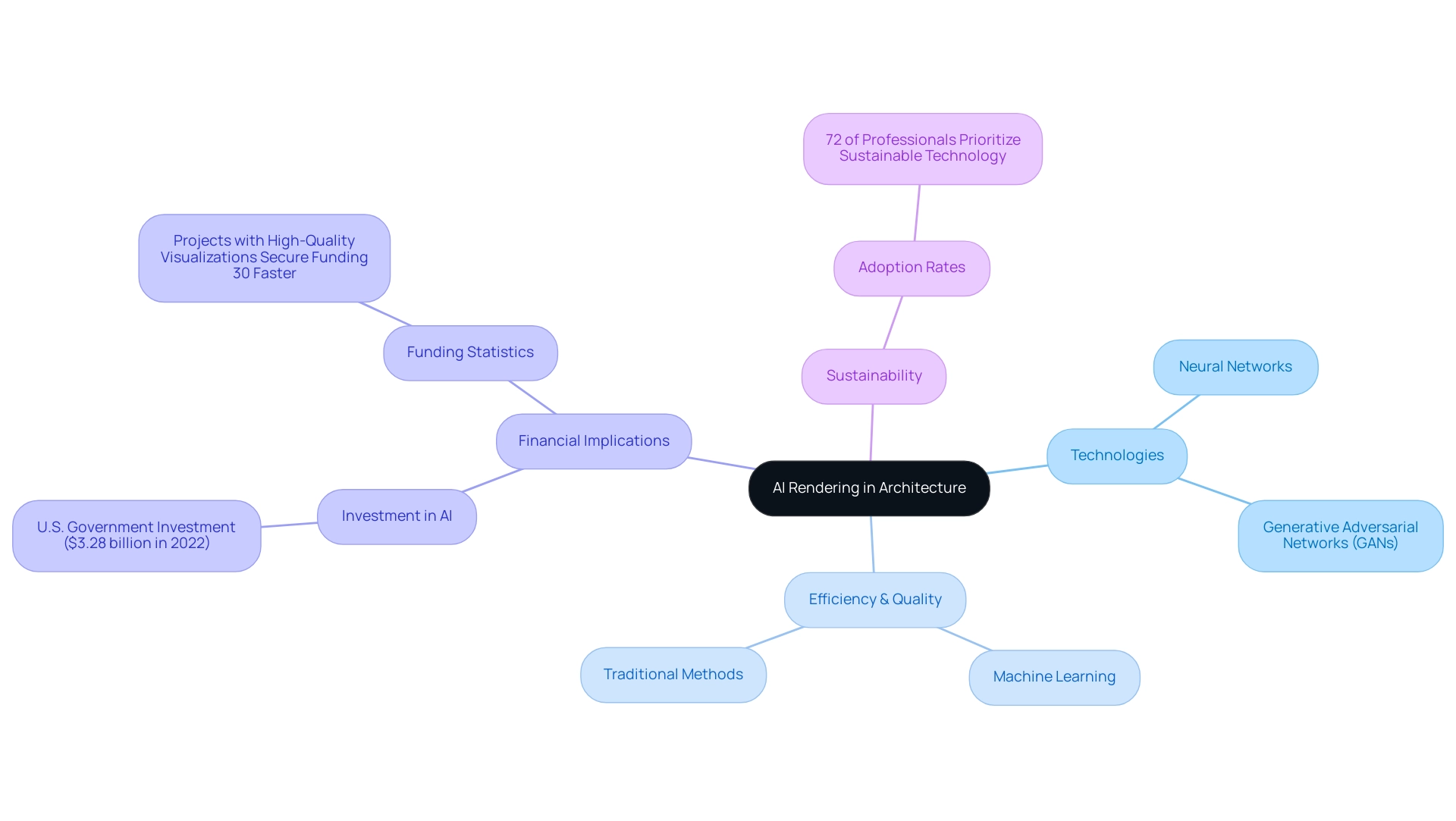
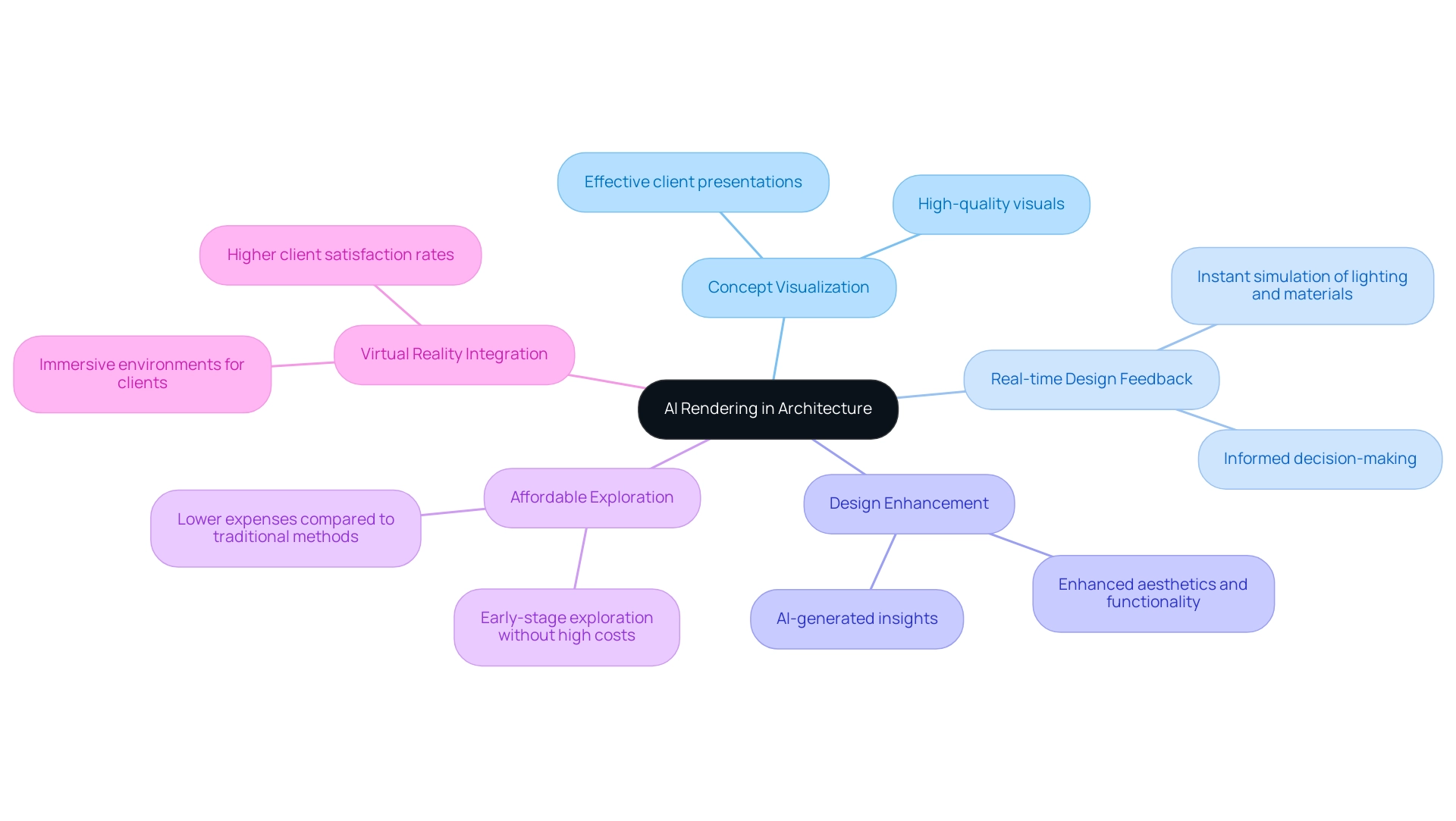
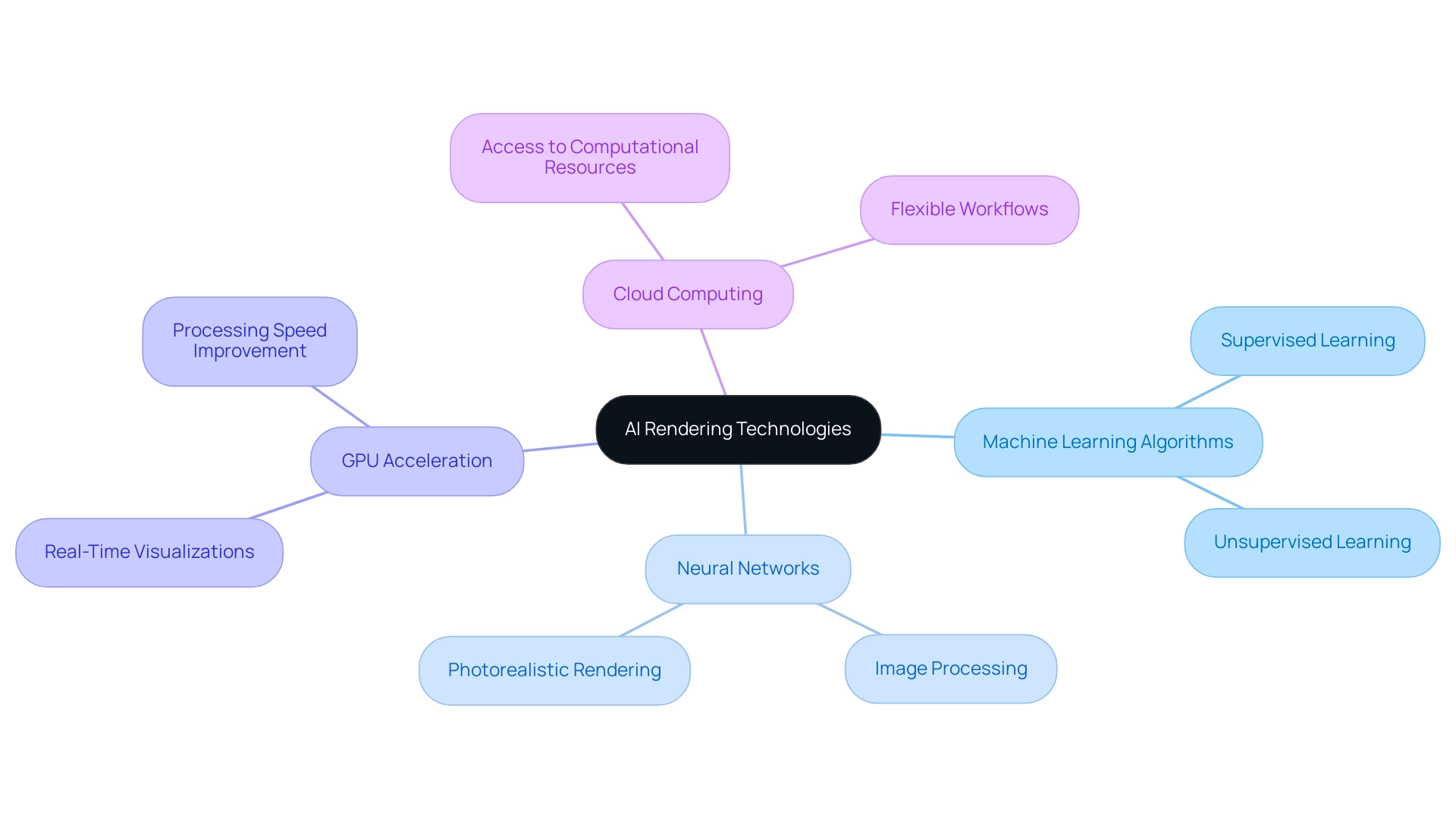
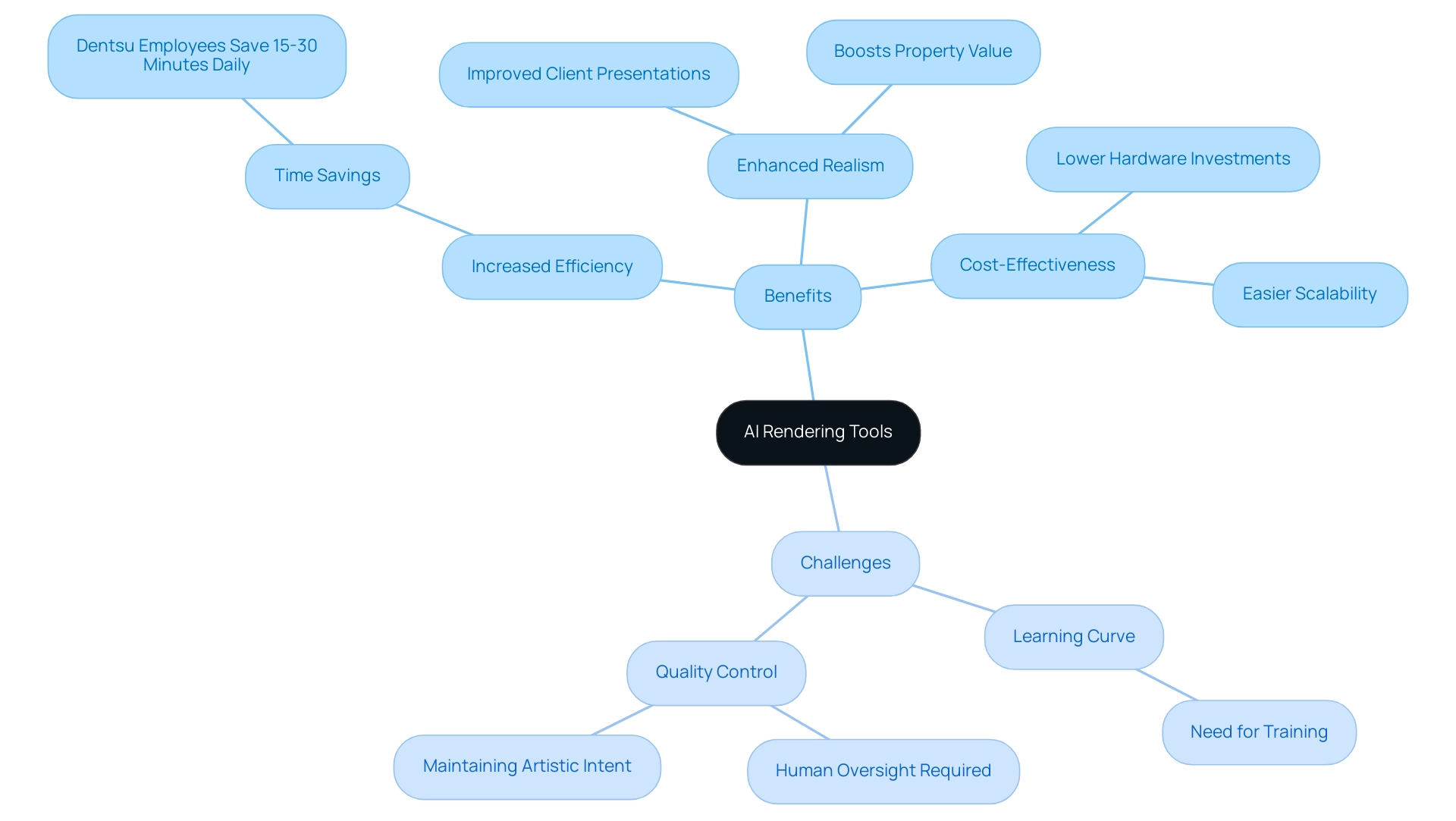
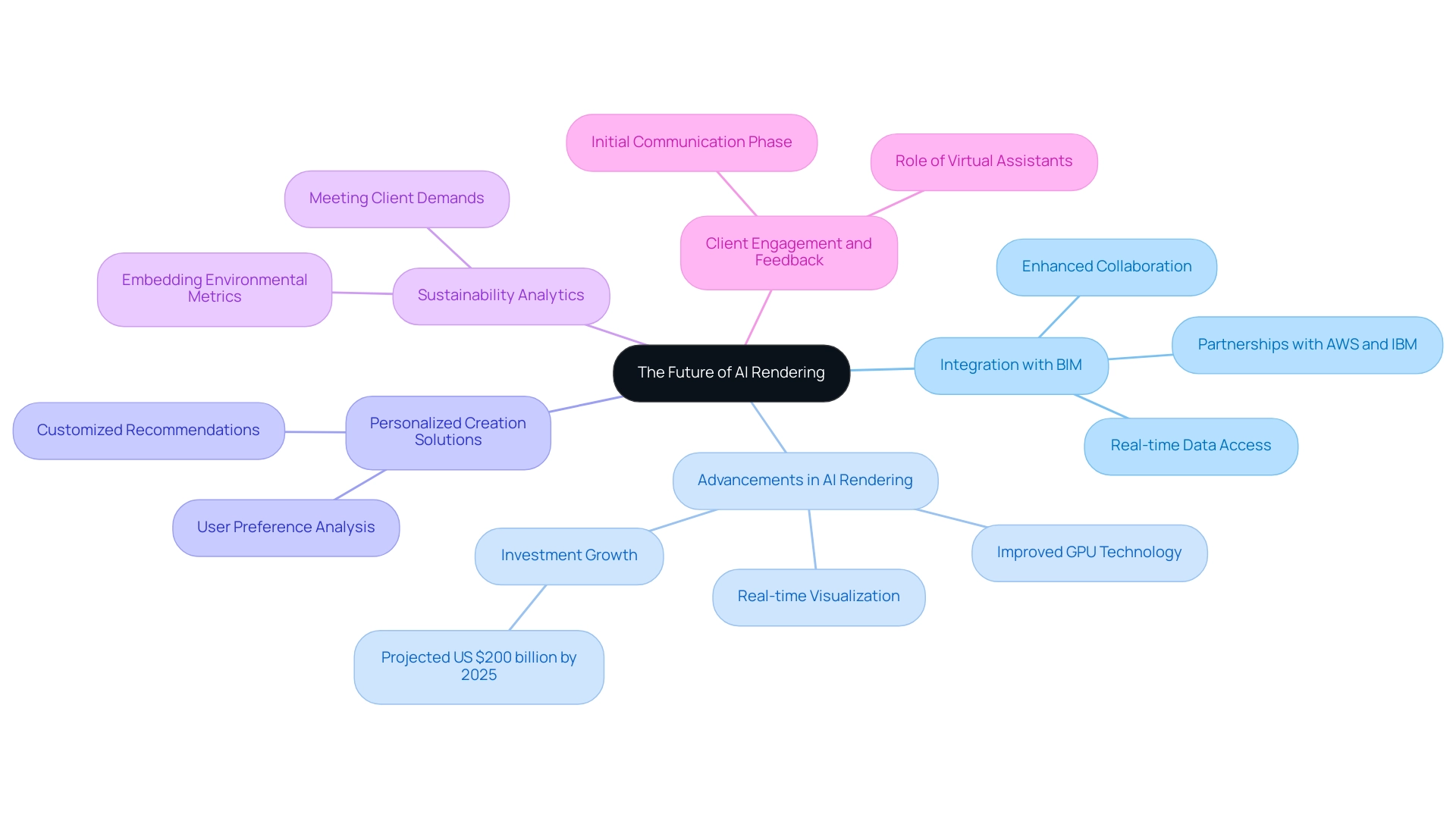
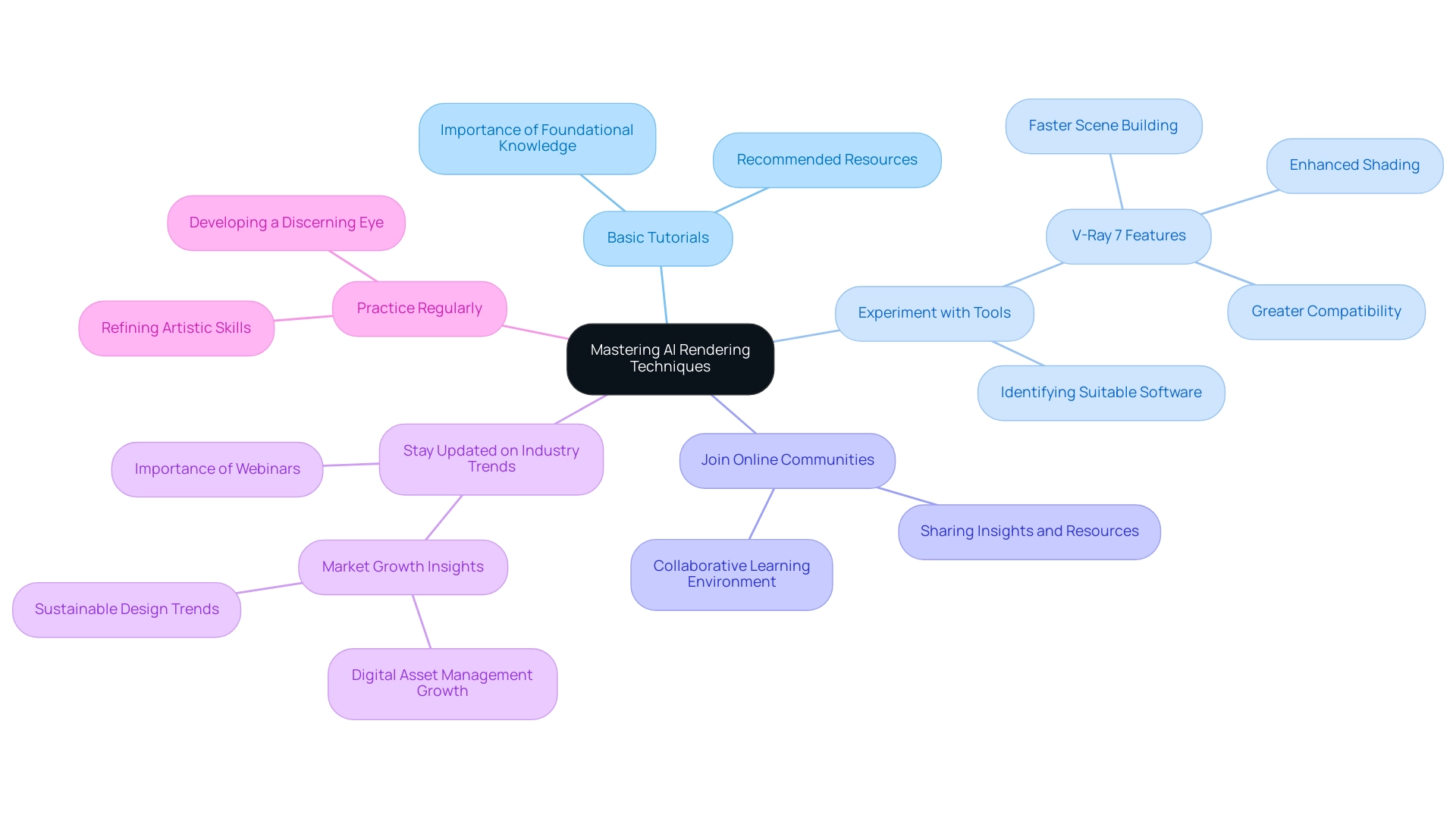
0 Comments